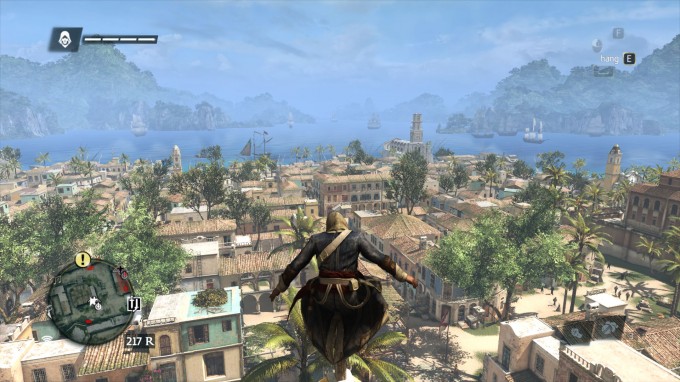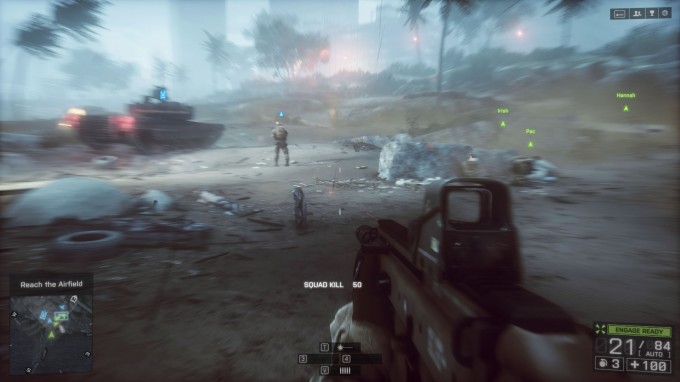- Qualcomm Launches Snapdragon 4 Gen 2 Mobile Platform
- AMD Launches Ryzen PRO 7000 Series Mobile & Desktop Platform
- Intel Launches Sleek Single-Slot Arc Pro A60 Workstation Graphics Card
- NVIDIA Announces Latest Ada Lovelace Additions: GeForce RTX 4060 Ti & RTX 4060
- Maxon Redshift With AMD Radeon GPU Rendering Support Now Available
AMD Radeon R9 290X & NVIDIA GeForce GTX 780 Ti Review

More often than not, every battle in the GPU Wars is hotly contested. From performance to appraisals of value, AMD and NVIDIA always engage in apparent mortal combat with each generation of GPU. This current gen of GPU, though, sees a clear-cut winner in most catagories. So did Team Red win, or did Team Green? Read on to find out!
Page 3 – Game Tests: Assassin’s Creed IV: Black Flag, Battlefield 4
Given the sheer number of titles in the Assassin’s Creed series, it’s a little hard to believe that the first game came out a mere six years ago. You could definitely say that Ubisoft hit the ball out of the park with this one. To date, we’ve never considered an AC game for benchmarking, but given the number of graphical goodies featured in the PC version of Black Flag, that trend now ends.
Manual Run-through: The saved game starts us not far from the beginning of the game under a small church which can be climbed to synchronize with the environment. To kick things off, I scale this church and rotate the camera around once, making sure to take in the beautiful landscape; then, I climb back down and run all the way to the water (the top of this small church and the water can be seen in the above screenshot).
Note: For some reason, Ubisoft decided to cap the framerate to 60 FPS in Black Flag even if Vsync is turned off. For most games, this would ruin the chance of it appearing in our benchmarking, but because the game is graphically intensive, I’ve chosen to stick with it, as at higher resolutions, reaching 60 FPS is a perk that will belong only to high-end graphics cards.
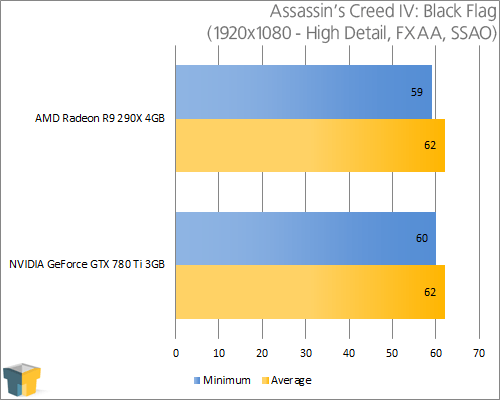
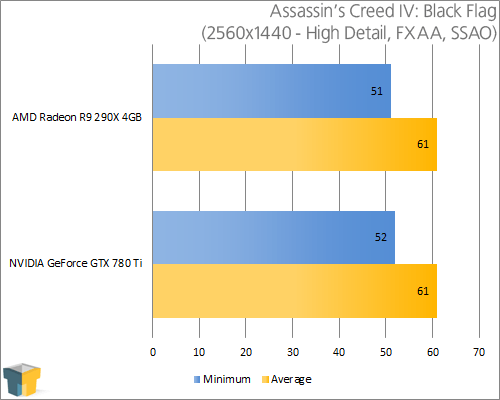
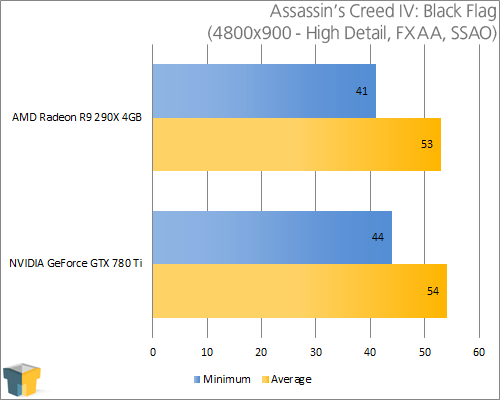
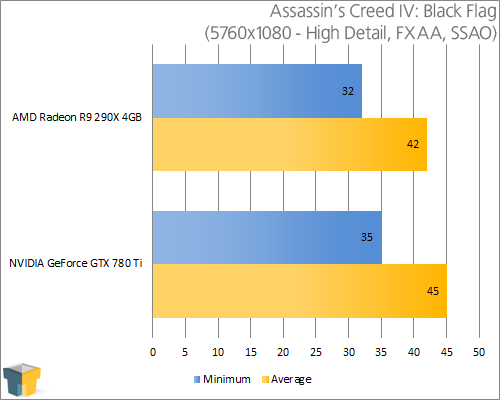
While 1080p might be a de facto resolution, it’s almost an insult to run it on a GPU like the 290X or 780 Ti. In fact, even 1440p proved to be no issue to either card – and believe me, at maxed-out settings, this game is gorgeous. When we move into multi-monitor territory, we can begin to see a change; 4800×900 performance would be suitable enough for most, but at 5760×1080, a decrease or two will be necessary to bring the game back up to ~60 FPS.
Battlefield 4
Thanks to the fact that DICE cares more about PC gaming than a lot of developers, the Battlefield series tends to give us titles that are well-worth benchmarking. Battlefield 3 offered incredible graphics and became a de facto benchmark immediately, so it’s no surprise, then, that BF4 follows right in its footsteps.
Manual Run-through: The Singapore level is the target here, with the saved game starting us on an airboat that must be driven to shore, where a massive battle is set to take place. I stop recording the framerate once the tank makes its way to the end of this small patch of beach; in all, the run takes about 3 minutes.
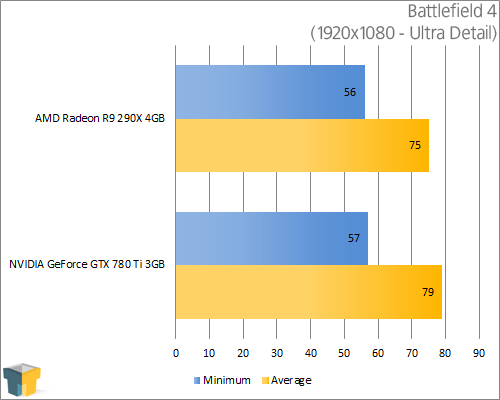
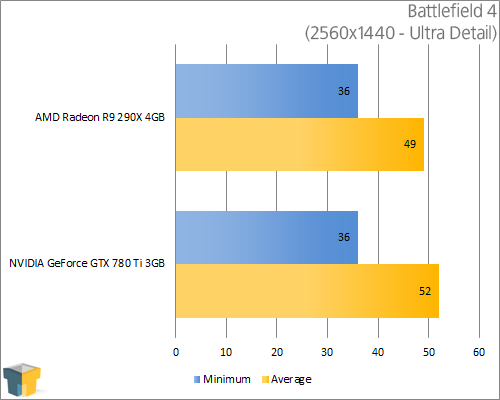
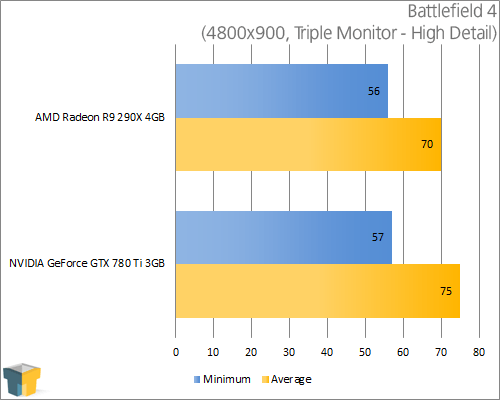
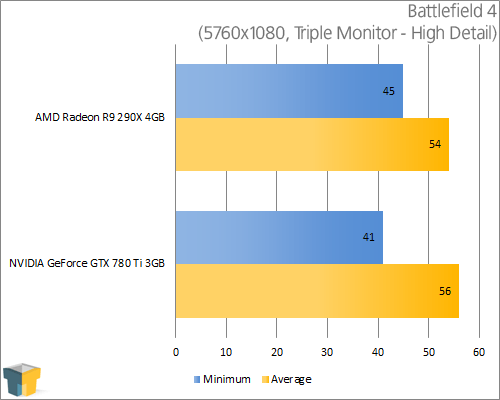
Once again, 1080p is an absolute breeze for both GPUs, and in this particular case, the same can be said for our multi-monitor resolution of 4800×900. For most games, 1080p is the easiest resolution to render (of those we test), while 4800×900 and 1440p place about the same. Then there’s 5760×1080, which tends to be in a league of its own. However, with Battlefield 4, 2560×1440 and 5760×1080 perform just about the same – definitely not something I see happen too often.
Support our efforts! With ad revenue at an all-time low for written websites, we're relying more than ever on reader support to help us continue putting so much effort into this type of content. You can support us by becoming a Patron, or by using our Amazon shopping affiliate links listed through our articles. Thanks for your support!




